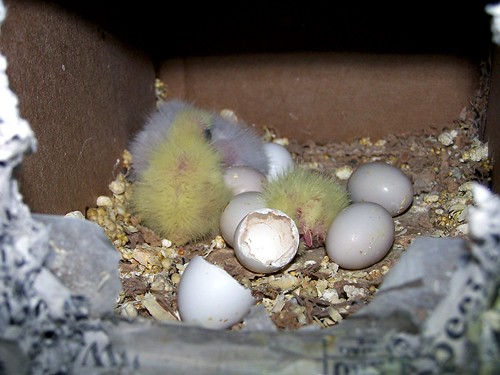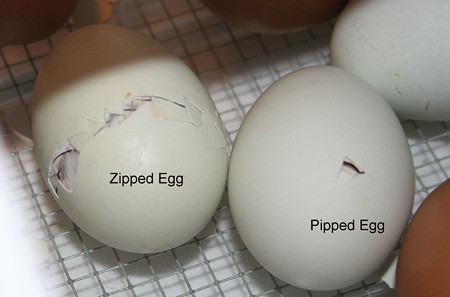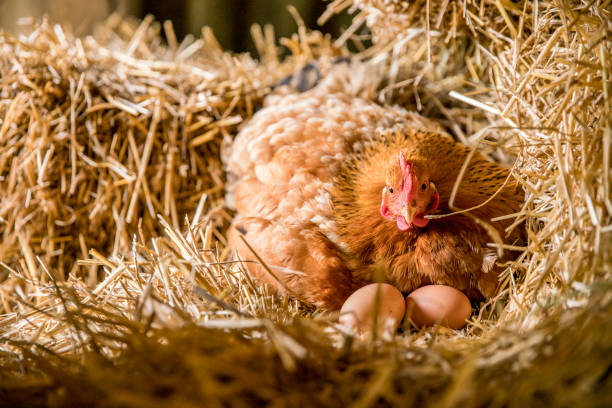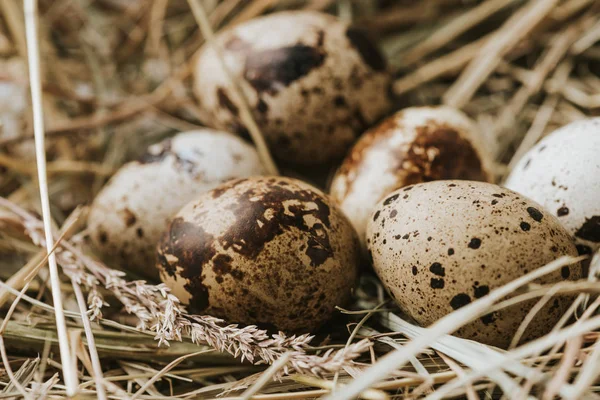Table of Contents
One of the most important aspects of breeding cockatiels is incubating their eggs. Incubating cockatiel eggs is not as simple as putting them in a warm place and waiting for them to hatch. You must provide the right temperature, humidity, and ventilation for the eggs to develop normally.
Cockatiel Egg Incubation Process
Step 1: Choose a suitable incubator
The first step is to choose an incubator that can accommodate your cockatiel eggs. Different types of incubators are available, such as forced-air, still-air, or automatic-turning incubators. You should look for an incubator that has a reliable thermostat, a humidity gauge, a fan, and a turner. The incubator should also be large enough to fit your eggs without crowding them.
Step 2: Set up the incubator
The next step is to set up the incubator in a safe and stable location. You should place the incubator away from direct sunlight, drafts and heat or cold sources. You should also make sure that the incubator is level and secure. You should plug in the incubator and turn it on for at least 24 hours before placing your eggs inside. This will allow the incubator to reach the optimal temperature and humidity for the eggs.
Step 3: Prepare the eggs
After setting up the incubator, prepare the eggs for incubation. You should inspect each egg carefully and discard any that are cracked, dirty, or abnormal in shape or size. You should also mark each egg with a pencil or a marker on both sides. This will help you track which eggs have been turned and which have not. You should also wash your hands before and after handling the eggs.
Step 4: Place the eggs in the incubator
The next step is to place the eggs in the incubator gently and carefully. You should arrange the eggs with the pointed end slightly down and the round end slightly up. This will help the embryo develop properly inside the egg. You should also leave some space between each egg to allow air circulation and turning.
Step 5: Monitor the temperature and humidity
It is essential to monitor the temperature and humidity of the incubator regularly. The ideal temperature for cockatiel eggs is between 99.5°F (37.5°C). The ideal humidity for cockatiel eggs is 55-60%. You should check the thermostat and the humidity gauge at least twice daily and adjust them as needed. You should also avoid opening the incubator too often or too long, as this can cause fluctuations in temperature and humidity.
Step 6: Turn the eggs
You must turn the eggs at least thrice daily. Turning the eggs prevents the embryo from sticking to one side of the shell and ensures even development. You can use an automatic turner if your incubator has one, or you can turn the eggs manually by rotating them 180 degrees from side to side. You should ensure that each egg is turned in a different direction each time.
Step 7: Candle the eggs
The seventh step is to candle the eggs periodically to check their development. Candling is a process of shining a bright light through the eggshell to see inside. Candling can help determine if the egg is fertile, has an embryo, blood vessels, movement, and any defects or problems. You can use a candling device or a flashlight for this purpose. You should candle your eggs for the first time around day 7 of incubation and then every few days until they hatch.
Step 8: Wait for hatching
The final step is to wait for your eggs to hatch. Cockatiel eggs usually hatch after 18 to 21 days of incubation. Stop turning your eggs on day 17 of incubation and increase the humidity to 70% to help them hatch. Also, listen for sounds or tapping noises from inside the eggs. These are signs that your chicks are ready to hatch.
When your chicks start hatching, you should not interfere unless they need assistance. Some chicks may take longer than others to hatch, and some may need help to break out of the shell. You should only help a chick if it is struggling, bleeding, or stuck. You should also remove empty shells or unhatched eggs from the incubator to prevent contamination or infection.
Once your chicks are fully hatched, transfer them to a brooder box with a heat lamp, bedding, food, and water. You should also monitor their health and growth and provide them with proper care and attention.
Also Read: How to Incubate Peacock Eggs + Incubation Chart
Cockatiel Egg Incubation Chart
Use the cockatiel egg incubation chart below as a guide to hatch cockatiel eggs successfully. The chart shows the ideal temperature, humidity, and turning frequency for each day of incubation.
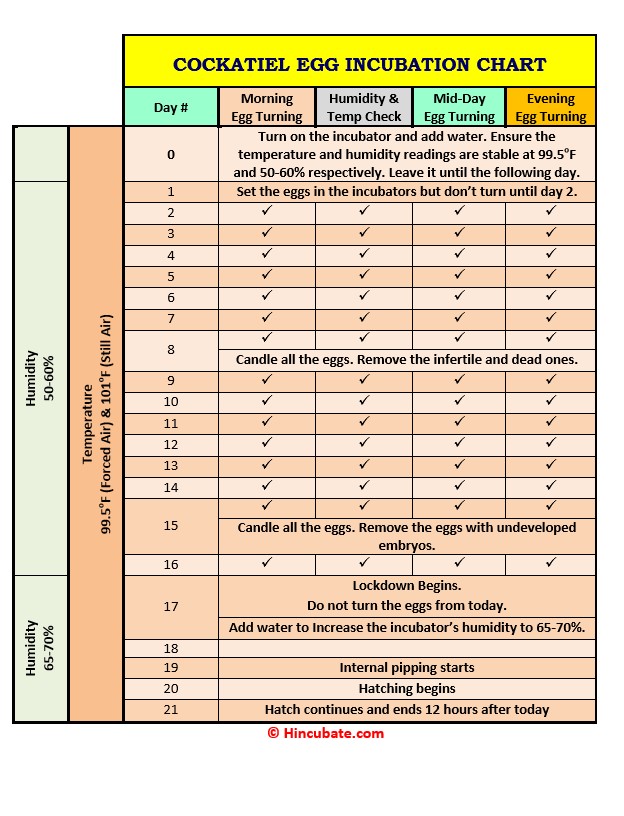
What do cockatiel eggs look like?
Cockatiel eggs, like the eggs of all parrots, are white and can be any shape from almost spherical to long and pointed, but are usually fat-egg shaped. They weigh about 6.5 grams, about a thirteenth of the weight of the laying hen cockatiel. In the picture below, the cockatiel eggs are compared in size to a chicken egg.
How long does it take for cockatiel eggs to hatch?
The incubation period for cockatiel eggs is 18-21 days. However, this can vary depending on the temperature and humidity of the incubator, as well as the health and age of the parents. The eggs will not hatch simultaneously but one by one in the order they were laid. This means that the first egg will hatch earlier than the last, and there may be a few days between each hatching.
How to identify fertilized cockatiel eggs?
Fertilized cockatiel eggs will have a red or pink tint when candled. Candling is a method of checking the development of an embryo inside an egg by shining a bright light through it. You can use a flashlight or a special candling device like the battery-powered OvaScope candler for this purpose. To candle an egg, hold it gently in your hand and place the light source near the larger end of the egg. You should see a network of blood vessels and a dark spot that is the embryo. The egg may be infertile or dead if you do not see any signs of life.

